Page 121 of 231
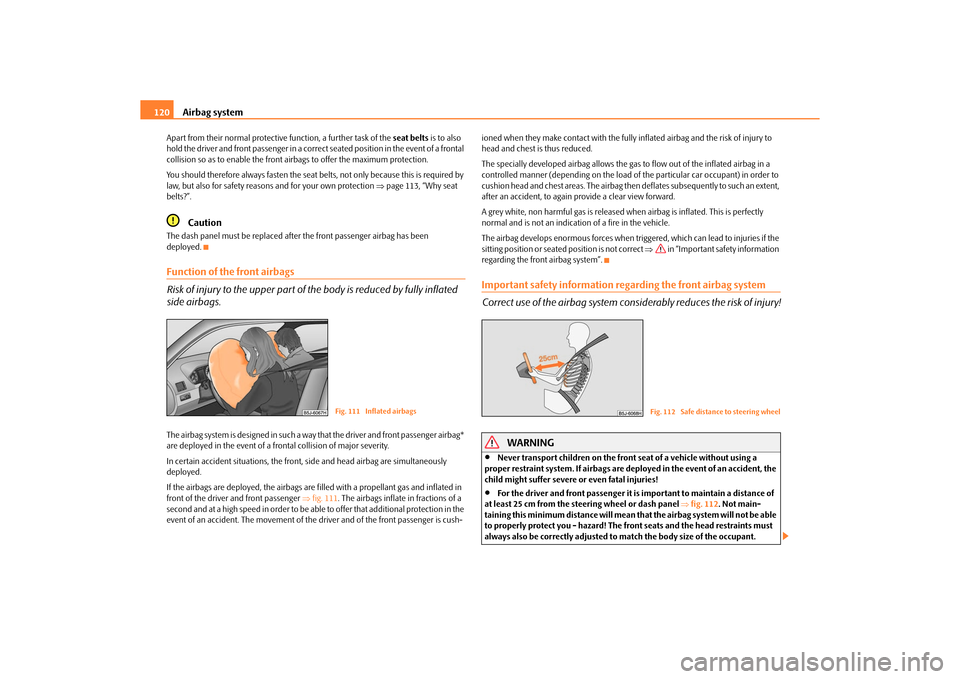
Airbag system
120
Apart from their normal protective function, a further task of the seat belts is to also
hold the driver and front passenger in a correct seated position in the event of a frontal
collision so as to enable the front ai rbags to offer the maximum protection.
You should therefore always fasten the seat be lts, not only because this is required by
law, but also for safety reasons and for your own protection page 113, “Why seat
belts?”.
Caution
The dash panel must be replaced after the front passenger airbag has been
deployed.Function of the front airbags
Risk of injury to the upper part of the body is reduced by fully inflated
side airbags.The airbag system is designed in such a way that the driver and front passenger airbag*
are deployed in the event of a frontal collision of major severity.
In certain accident situations, the front, side and head airbag are simultaneously
deployed.
If the airbags are deployed, the airbags are filled with a propellant gas and inflated in
front of the driver and front passenger fig. 111 . The airbags inflate in fractions of a
second and at a high speed in order to be able to offer that additional protection in the
event of an accident. The movement of the driver and of the front passenger is cush- ioned when they make contact with the fully inflated airbag and the risk of injury to
head and chest is thus reduced.
The specially developed airbag allows the gas
to flow out of the inflated airbag in a
controlled manner (depending on the load of the particular car occupant) in order to
cushion head and chest areas. The airbag then deflates subsequently to such an extent,
after an accident, to again provide a clear view forward.
A grey white, non harmful gas is released when airbag is inflated. This is perfectly
normal and is not an indicati on of a fire in the vehicle.
The airbag develops enormous forces when triggered, which can lead to injuries if the
sitting position or seated position is not correct in “Important safety information
regarding the front airbag system”.
Important safety information regarding the front airbag system
Correct use of the airbag system cons iderably reduces the risk of injury!
WARNING
Never transport children on the front seat of a vehicle without using a
proper restraint system. If airbags are de ployed in the event of an accident, the
child might suffer severe or even fatal injuries!
For the driver and front passenger it is important to maintain a distance of
at least 25 cm from the steering wheel or dash panel fig. 112 . Not main-
taining this minimum distance will mean that the airbag system will not be able
to properly protect you - hazard! The front seats and the head restraints must
always also be correctly adjusted to match the body size of the occupant.
Fig. 111 Inflated airbags
Fig. 112 Safe distance to steering wheel
s16g.4.book Page 120 Wednesda y, February 10, 2010 3:53 PM
Page 122 of 231

Airbag system121
Using the system
Safety
Driving Tips
General Maintenance
Breakdown assistance
Praktik
Technical Data
It is essential to always switch off page 124, “Deactivating airbags” the
front passenger airbag when attaching a child safety seat on the front
passenger seat where the child is seated with its back facing in direction of
travel (in some countries also when the child is facing the direction of travel). If
this is not done, there is a risk of the ch ild suffering severe or even fatal injuries
if the front passenger airbag is deploy ed. In certain countries national legal
provisions also require that the side or head passenger airbags be deactivated.
When transporting a child on the front passenger seat, please comply with the
appropriate national regu lations regarding the use of child safety seats.
There must not by any further persons, animals or objects positioned
between the front seated occupants and the deployment area of the airbag.
The steering wheel and the surface of the airbag module in the dash panel
on the passenger side must not be stuck onto, covered or modified in any other
way. These parts should only be cleaned with a dry cloth or a cloth moistened
with water. No objects such as cup holders, mobile phone mounts, etc. may be
attached to the covers of the airbag modules or be located within the imme-
diate area.
No modifications of any kind may be made to parts of the airbag system.
Any work on the airbag system including installing and removing system
components because of other repair wo rk (e.g. removing the steering wheel)
must only be carried out by a specialist garage.
Never carry out changes on the front bumper or on the body.
Never place any objects on the surface of the dash panel on the front
passenger side.
Side airbags*Description of side airbags
The side airbag increases protection of the passenger concerned in the
case of a side impact.The side airbags are housed in the upholstery of the seat backrests of the front seats
and are marked with the lettering “AIRBAG” fig. 113 on the middle part.
The side airbag system in combination with the three-point seat belts, offers additional
protection for the upper area of the body (chest, stomach and pelvis) in the event of
severe side collisions in “Important safety information on the side airbag” on
page 122.
Apart from their normal protective function, a further task of the seat belts is to also
hold the driver and front pass enger in a correct seated position in the event of a side
collision so as to enable the side ai rbags to offer the maximum protection.
You should therefore always fasten the seat belts, not only because this is required by
law, but also for safety reasons and for your own protection page 113, “Why seat
belts?”.
WARNING (continued)
Fig. 113 Driver seat : Installation posi-
tion of airbag
s16g.4.book Page 121 Wednesda y, February 10, 2010 3:53 PM
Page 123 of 231

Airbag system
122
Function of the side airbags
Risk of injury to the upper part of the body is reduced by fully inflated
side airbags.In the case of a violent side crash , the side airbag in the front seat and the head airbag
on the side on which the collision occurs are deployed fig. 114 .
In certain accident situations, the front, side and head airbag are simultaneously
deployed.
If an airbag is deployed, the airbag is filled with gas. The airbags inflate in fractions of a
second and at a high speed in order to be able to offer that additional protection in the
event of an accident.
A grey white, non harmful gas is released when airbag is inflated. This is perfectly
normal and is not an indicati on of a fire in the vehicle.
The load of the occupants is cushioned when plunging into the fully inflated airbag and
the risk of injury to the entire upper body (chest, stomach and pelvis) is reduced on the
side facing the door.Important safety information on the side airbag
Correct use of the airbag system cons iderably reduces the risk of injury!
WARNING
It is essential to always switch off page 124, “Deactivating airbags” the
front passenger airbag when attachin g a child safety seat on the front passenger seat where the child is seated
with its back facing in direction of
travel (in some countries also when the chil d is facing the direction of travel). If
this is not done, there is a risk of the ch ild suffering severe or even fatal injuries
if the front passenger airbag is deploy ed. In certain countries national legal
provisions also require that the side passenger airbags be deactivated. When
transporting a child on the front passenger seat, please comply with the appro-
priate national regulations regarding the use of child safety seats.
Your head should never be positioned in the deployment area of the side
airbag. You might suffer severe injuries in the event of an accident. This applies
in particular to children who are transported without using a suitable child
safety seat page 128, “Child safety and side airbag*”.
If children adopt an incorrect seated position when travelling, they may be
exposed to an increased risk of injury in the event of an accident. This can result
in serious injuries page 126, “What you should know about transporting
children!”.
There must not be any further persons, animals as well as objects posi-
tioned between the occupants and the deployment area of the airbag. No
accessories, such as a can holder, should be attached to the doors.
Only hang light items of clothing on the clothes hooks to the vehicle. Never
leave any heavy or sharp-ed ged objects in the pockets of the items of clothing.
Ensure that there are no excessive forc es, such as violent knocks, kicks etc.,
impact on the backrests of the seats otherwise the system may be damaged.
The side airbags would not be deployed in such a case!
Any seat or protective covers which you fit to the driver or front passenger
seats must only be of the type expressly authorised by Škoda Auto. In view of
the fact that the airbag inflates out of the backrest of the seat, use of non-
approved seat or protective covers would considerably impair the protective
function of the side airbag.
Any damage to the original seat covers in the area of the side airbag module
must be repaired without delay by your specialist garage.
The airbag modules in the front seats must not display any damage, cracks
or deep scratches. It is not permissible to use force in order to open the
modules.
Fig. 114 Side airbags deployed
WARNING (continued)
s16g.4.book Page 122 Wednesda y, February 10, 2010 3:53 PM
Page 124 of 231

Airbag system123
Using the system
Safety
Driving Tips
General Maintenance
Breakdown assistance
Praktik
Technical Data
Any work on the side airbag system including removing and installing
system components because of other repair work (e.g. removing seats) must
only be carried out by a specialist garage.
Head airbags*Description of the head airbags
The head airbag together with the side airbag offers enhanced occu-
pant protection in the event of a side collision.The head airbags are positioned above the d oors on both sides in the interior of the
car fig. 115 . The installation positions of the head airbags are each marked with the
“AIRBAG” logo.
The head airbag together with the three-poin t seat belts and the side airbags, offers
additional protection for the head and neck area of the occupants in the event of a side
collision of major severity in “Important safety information on the head airbag”
on page 124.
Apart from their normal protective function, a further task of the seat belts is to also
hold the driver and the occupants in a correc t seated position in the event of a side
collision so as to enable the head ai rbags to offer the maximum protection.
You should therefore always fasten the seat belts, not only because this is required by
law, but also for safety reasons and for your own protection page 113. Together with other elements (such as cross bars in the seats, stable vehicle structure)
the head airbags are the consequent further development of occupant protection in
the case of side collisions.
Function of the head airbags
The risk of injury to the head and ne
ck area is reduced in the event of a
side collision by fully inflated head airbags.In the case of a side collision the head airbag is deployed together with the relevant
side airbag on the side on which the accident occurs fig. 116 .
If the system is deployed, the airbag is fille d with propellant gas and covers the entire
area of the side window including the door pillars fig. 116 .
The protection offered by the head airbags is thus available simultaneously both to the
front occupants of the car seated on the side on which the collision occurs, as well as
to the rear occupants. Any impact of the head against parts of the interior or objects
outside of the car, is cushioned by the in flated head airbag. The reduction in any
impact to the head and the resultant minimi zing of any movements of the head addi-
tionally reduce the risk of injuries to the neck area. In certain accident situations, the
front, side and head airbag are simultaneously deployed.
The airbags inflate in fractions of a second an d at a high speed in order to be able to
offer that additional protection in the event of an accident. A grey white, non harmful
gas is released when airbag is inflated. This is perfectly normal and is not an indication
of a fire in the vehicle.
WARNING (continued)
Fig. 115 Installation position of the
head airbags
Fig. 116 Inflated head airbag
s16g.4.book Page 123 Wednesda y, February 10, 2010 3:53 PM
Page 125 of 231

Airbag system
124
Important safety information on the head airbag
Correct use of the airbag system cons iderably reduces the risk of injury!
WARNING
It is essential to always switch off page 124 the front passenger airbag
when attaching a child safety seat on th e front passenger seat where the child is
seated with its back facing in direction of travel (in some countries also when
the child is facing the direction of travel). If this is not done, there is a risk of the
child suffering severe or even fatal inju ries if the front passenger airbag is
deployed. In certain countries national legal provisions also require that the
side or head passenger airbags be deac tivated. When transporting a child on
the front passenger seat, pl ease comply with the appropriate national regula-
tions regarding the use of child safety seats.
There must not be any objects in the deployment area of the head airbags
which might prevent the airbag s from inflating properly.
Only hang light items of clothing on the clothes hooks to the vehicle. Never
leave any heavy or sharp-edged objects in the pockets of the items of clothing.
In addition, it is not permitted to use clothes hangers for hanging up items of
clothing.
There must not be any other persons (e .g. children) or animals between the
car occupant and the deployment area of the head airbag. In addition, none of
the occupants should lean their head out of the window when driving, or
extend their arms and hands out of the window.
The sun visors must not be swivelled to the side windows into the deploy-
ment area of the head airbags if any ob jects, such as ball-point pens etc. are
attached to them. This might result in injuries to the occupants if the head
airbag is deployed.
Installing impermissible accessories in the area of the head airbags may
considerably impair the protection offered by the head airbag in the event of it
being deployed. When the deployed head airbag is inflated, parts of the acces-
sories fitted may in certain circumstances be thrown into the interior of the car
and cause injuries to the occupants page 179.
Any work on the head airbag system including installing and removing
system components because of other repair work (e.g. removing headliner)
must only be carried out by a specialist garage.
Deactivating airbagsDeactivating airbags
If any airbags have been deactivated, switch them on again as soon as
possible so that they are able to ag ain provide their proper protection.There is the technical means installed within your vehicle to switch off the front, side*
or head* airbag (take out of commission).
This is why you should have the deactivation of the airbags carried out by a specialist
garage.
On vehicles equipped with the switch for deactivation of the airbags, you can deacti-
vate the front passenger airbag by means of this switch page 125.
Deactivation of airbags is envisaged only for particular instances, such as if:
Yo u m u s t i n exceptional cases use a child seat on the front passenger seat where
the child is seated with its back to the direction of travel (in some countries this must
be in the direction of travel due to other legal regulations applying) page 126,
“Important safety information regarding the use of child safety seats”;
you are not able to maintain the distance of at least 25 cm between middle of
steering wheel and chest, despite the driver seat being correctly adjusted;
special attachments are required in the area of the steering wheel because of a
physical disability;
you have installed other seats (e.g. orthopaedic seats without side airbags).
Monitoring the airbag system
The functionality of the airbag system is al so monitored electronically when one airbag
has been switched off.
If the airbag was switched off using diagnostic equipment:
The airbag indicator light lights up for 3 seconds each time the ignition is switched
on and then flashes after that for about 12 seconds.
If the airbag was switched off using the airbag switch* on the side of the dash
panel:
the airbag indicator light in the instrume nt cluster comes on for about 3 seconds
each time the igniti on is switched on;
s16g.4.book Page 124 Wednesda y, February 10, 2010 3:53 PM
Page 126 of 231

Airbag system125
Using the system
Safety
Driving Tips
General Maintenance
Breakdown assistance
Praktik
Technical Data
switching off the airbag is indicated in the middle of the dash panel on the right by
the lighting up of the indicator light in the display
fig. 117 .
Note
A specialist garage will be able to advise you whether national legislation in your
country allows airbags in your vehicl e to be deactivated, and which ones.Switch for the front passenger airbag*Fig. 117 Switch for the front passenger airbag / indicator light for a switched off front seat
passenger airbagOnly the front passenger airbag is deactivated with the switch.Deactivating an airbag– Switch off the ignition.
– Turn the slot of the airbag switch using the ignition key in the direction of the arrow
to the position OFF fig. 117 .
– Check whether the airbag indicator light in the display
in
the middle of the dash panel on the right lights up when the ignition is switched on
fig. 117 .
Switching on an airbag– Switch off the ignition.
– Turn the slot of the airbag switch using the ignition key in the direction of the arrow
to the position ON fig. 117 . – Check whether the airbag indicator light in the display
in
the middle of the dash panel on the right lights up when the ignition is switched on
fig. 117 .
The airbag should only be switched off under exceptional circumstances page 124.
Indicator light in display
(airbag switched off)
The airbag indicator light is located in the middle of the dash panel fig. 117 on the
right.
If the airbag is switched on, the airbag indicator light comes on for a few seconds after
switching on the ignition.
In cases where the front passenger airbag is switched off the airbag indicator light
comes on for a few seconds after switching on the ignition, goes out for about a second
and then comes on again.
There is a system fault present in the airbag switch off if the indicator light
flashes.
WARNING
The driver is responsible for whethe r the airbags are switched on or
switched off.
Only switch off the airbag when the ignition is switched off! Otherwise a
fault can occur in the system for the airbag deactivation.
If the warning light
(airbag switched off) flashes:
Front passenger airbag is not deployed in the event of an accident!
It is also important to have the system inspected without delay by a
specialist garage.
s16g.4.book Page 125 Wednesda y, February 10, 2010 3:53 PM
Page 127 of 231
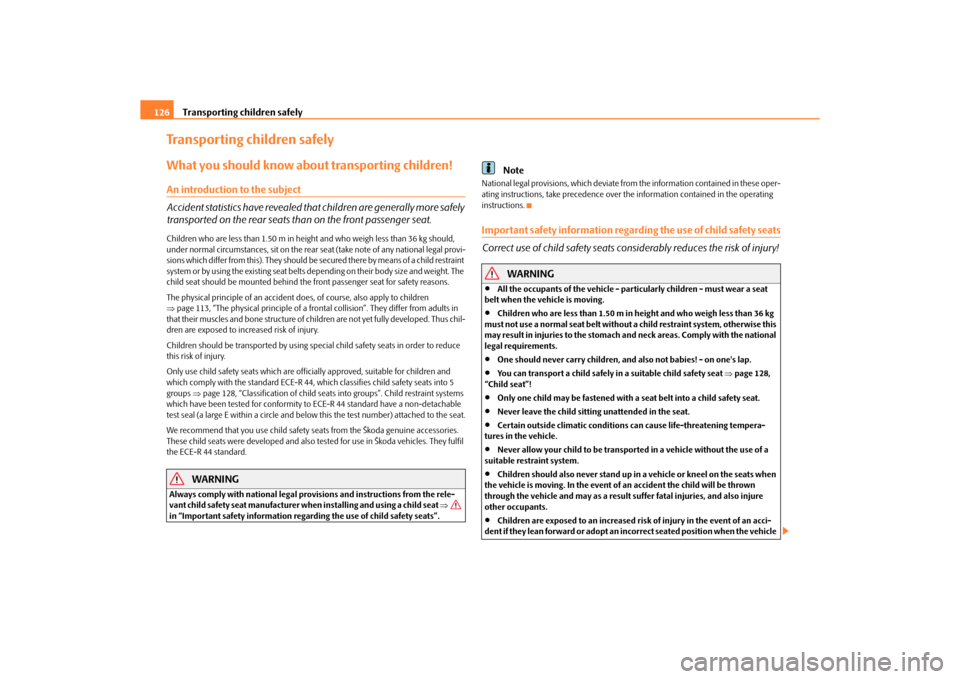
Transporting children safely
126
Transporting children safelyWhat you should know ab out transporting children!An introduction to the subject
Accident statistics have revealed that children are generally more safely
transported on the rear seats than on the front passenger seat.Children who are less than 1.50 m in height and who weigh less than 36 kg should,
under normal circumstances, sit on the rear seat (take note of any national legal provi-
sions which differ from this). They should be secured there by means of a child restraint
system or by using the existing seat belts depending on their body size and weight. The
child seat should be mounted behind the front passenger seat for safety reasons.
The physical principle of an accident does, of course, also apply to children
page 113, “The physical principle of a fronta l collision”. They differ from adults in
that their muscles and bone structure of children are not yet fully developed. Thus chil-
dren are exposed to increased risk of injury.
Children should be transporte d by using special child safety seats in order to reduce
this risk of injury.
Only use child safety seats which are offici ally approved, suitable for children and
which comply with the standard ECE-R 44, wh ich classifies child safety seats into 5
groups page 128, “Classification of child seats into groups”. Child restraint systems
which have been tested for conformity to ECE-R 44 standard have a non-detachable
test seal (a large E within a circle and below this the test number) attached to the seat.
We recommend that you use child safety seats from the Škoda genuine accessories.
These child seats were developed and also tested for use in Škoda vehicles. They fulfil
the ECE-R 44 standard.
WARNING
Always comply with national legal provisions and instructions from the rele-
vant child safety seat manufacturer wh en installing and using a child seat
in “Important safety information regarding the use of child safety seats”.
Note
National legal provisions, which deviate from the information contained in these oper-
ating instructions, take precedence over the information contained in the operating
instructions.Important safety information regarding the use of child safety seats
Correct use of child safety seats considerably reduces the risk of injury!
WARNING
All the occupants of the vehicle - particularly children - must wear a seat
belt when the ve hicle is moving.
Children who are less than 1.50 m in height and who weigh less than 36 kg
must not use a normal seat belt without a child restraint system, otherwise this
may result in injuries to the stomach and neck areas. Comply with the national
legal requirements.
One should never carry children, and also not babies! - on one's lap.
You can transport a child safely in a suitable child safety seat page 128,
“Child seat”!
Only one child may be fastened with a seat belt into a child safety seat.
Never leave the child sitting unattended in the seat.
Certain outside climatic conditions can cause life-threatening tempera-
tures in the vehicle.
Never allow your child to be transported in a vehicle without the use of a
suitable restraint system.
Children should also never stand up in a vehicle or kneel on the seats when
the vehicle is moving. In the event of an accident the child will be thrown
through the vehicle and may as a result suffer fatal injuries, and also injure
other occupants.
Children are exposed to an increased risk of injury in the event of an acci-
dent if they lean forward or adopt an in correct seated position when the vehicle
s16g.4.book Page 126 Wednesday, February 10, 2010 3:53 PM
Page 128 of 231

Transporting children safely127
Using the system
Safety
Driving Tips
General Maintenance
Breakdown assistance
Praktik
Technical Data
is moving. This particularly applies to children who are transported on the front
passenger seat if the airbag system deploy
s in the event of an accident. This can
result in severe or even fatal injuries.
It is important that the belt webbing is properly routed if the seat belts are
to offer their maximum protection page 115, “How are seat belts correctly
fastened?”. Pay particular attention to the information provided by the manu-
facturer of the child safety seat regarding correct routing of the belt. Seat belts
which are not correctly adjusted can themselves cause injuries even in minor
accidents.
Safety belts must be checked to ensure that they are running properly. One
should also ensure that the belt is not damaged by sharp-edged fittings.
It is essential to always switch off th e front passenger airbag when attaching
a child safety seat to the front passenger seat where the child is seated with its
back facing in direction of travel page 124. If this is not done, there is a risk of
the child suffering severe or even fatal in juries if the front passenger airbag is
deployed. When transporting a child on the front passenger seat, please
comply with the appropriate national regulations regarding the use of child
safety seats.
Use of child safety seats on the front passenger seat
Child safety seats should always be attached to the rear seats.We recommend, for safety reasons, that you always mount a child restraint systems on
the rear seats whenever possible. If you still decide, however, to use a child safety seat on the front passenger seat then you must pay attention to the following warnings in
connection with the use of the airbag system on the front passenger seat.
WARNING
Warning - particular hazard! Never use a child safety seat on the front
passenger seat in which the child is seated with its back facing the direction of
travel. This child safety seat is positioned in the deployment area of the front
passenger airbag. The airbag may cause th e child severe, or even fatal injuries,
in the event of it being deployed.
This is also clearly stat ed on the sticker which is located on the centre
column of the body on the front passenger side fig. 118 . The sticker is visible
upon opening the front passenger door. For some countries, the sticker is also
affixed to the sun visor of the front passenger.
It is essential to always switch off the front passenger airbag when a child
safety seat is nevertheless attached to the front passenger seat where the child
is seated with its back facing in direction of travel page 124, “Deactivating
airbags”. If this is not done, there is a ri sk of the child suffering severe or even
fatal injuries if the front passenger ai rbag is deployed. In certain countries
national legal provisions also require that the front passenger side airbag or the
front passenger head airbag be deactivated. When transporting a child on the
front passenger seat, please comply with the appropriate national regulations
regarding the use of child safety seats.
If the front passenger airbag has been switched off by a specialist garage
using the vehicle system te ster, the side airbag* or the head airbag* and the
passenger belt tensioner re main switched on. Please comply with any differing
national legal regulations regardin g the use of child safety seats.
If a child safety seat in which the child faces in the direction of travel is used
on the front passenger seat, the front pa ssenger seat must be moved back and
to the top fully. Move the seat backrest into the vertical position.
You should have the front passenger airbag (or airbags) reactivated just as
soon as you no longer use a child safe ty seat on the front passenger seat.
WARNING (continued)
Fig. 118 Sticker on the centre column of
the body on the front passenger side.
s16g.4.book Page 127 Wednesday, February 10, 2010 3:53 PM
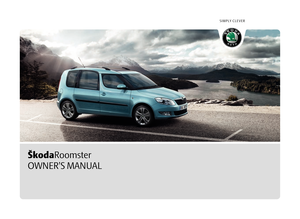 1
1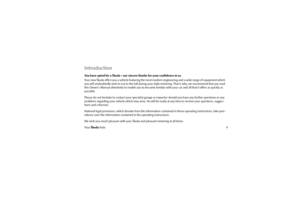 2
2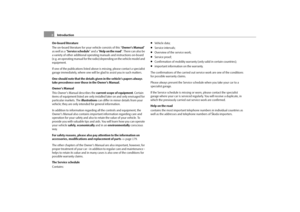 3
3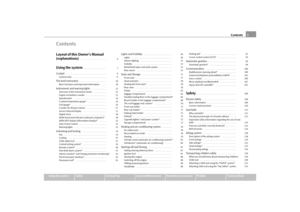 4
4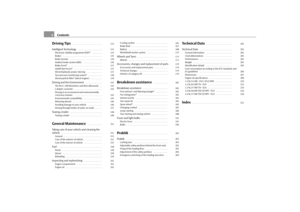 5
5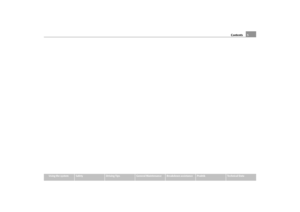 6
6 7
7 8
8 9
9 10
10 11
11 12
12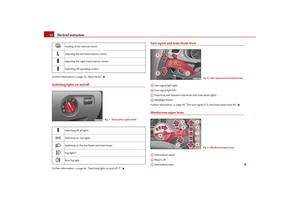 13
13 14
14 15
15 16
16 17
17 18
18 19
19 20
20 21
21 22
22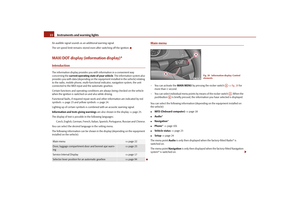 23
23 24
24 25
25 26
26 27
27 28
28 29
29 30
30 31
31 32
32 33
33 34
34 35
35 36
36 37
37 38
38 39
39 40
40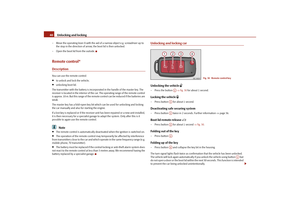 41
41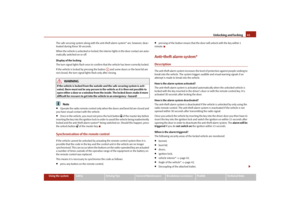 42
42 43
43 44
44 45
45 46
46 47
47 48
48 49
49 50
50 51
51 52
52 53
53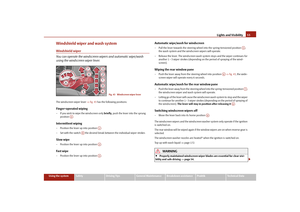 54
54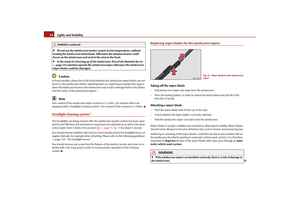 55
55 56
56 57
57 58
58 59
59 60
60 61
61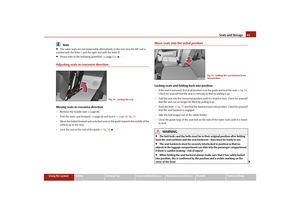 62
62 63
63 64
64 65
65 66
66 67
67 68
68 69
69 70
70 71
71 72
72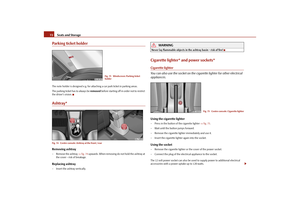 73
73 74
74 75
75 76
76 77
77 78
78 79
79 80
80 81
81 82
82 83
83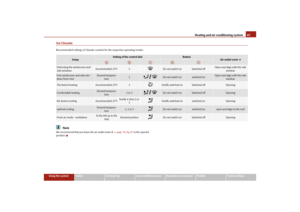 84
84 85
85 86
86 87
87 88
88 89
89 90
90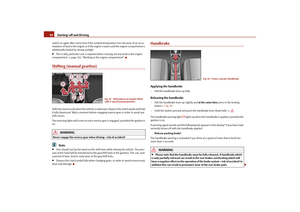 91
91 92
92 93
93 94
94 95
95 96
96 97
97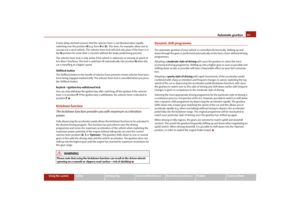 98
98 99
99 100
100 101
101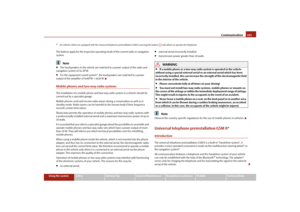 102
102 103
103 104
104 105
105 106
106 107
107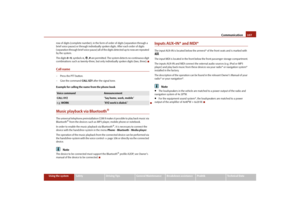 108
108 109
109 110
110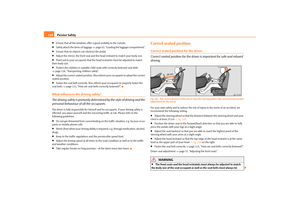 111
111 112
112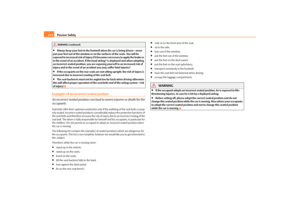 113
113 114
114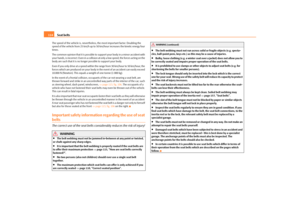 115
115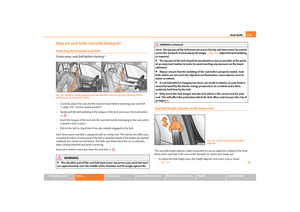 116
116 117
117 118
118 119
119 120
120 121
121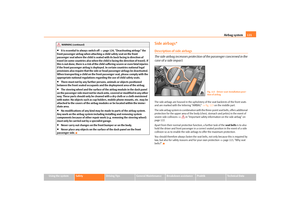 122
122 123
123 124
124 125
125 126
126 127
127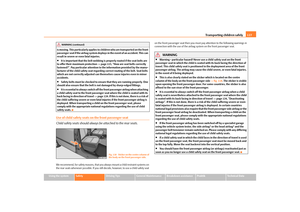 128
128 129
129 130
130 131
131 132
132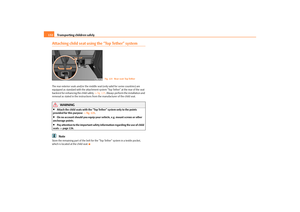 133
133 134
134 135
135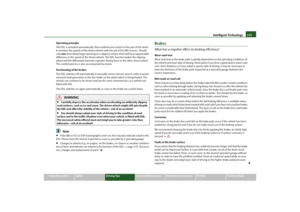 136
136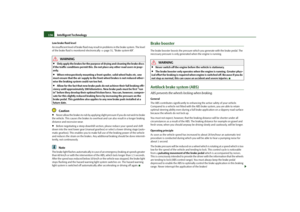 137
137 138
138 139
139 140
140 141
141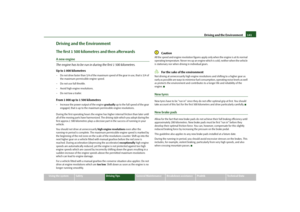 142
142 143
143 144
144 145
145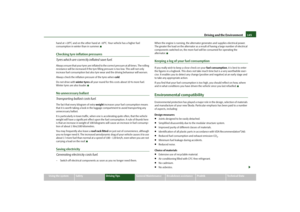 146
146 147
147 148
148 149
149 150
150 151
151 152
152 153
153 154
154 155
155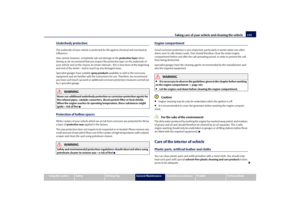 156
156 157
157 158
158 159
159 160
160 161
161 162
162 163
163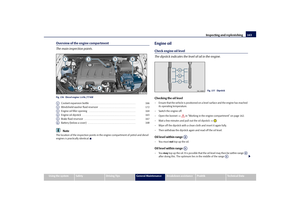 164
164 165
165 166
166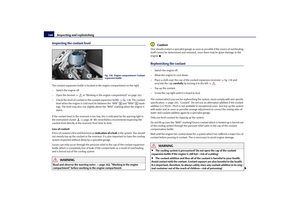 167
167 168
168 169
169 170
170 171
171 172
172 173
173 174
174 175
175 176
176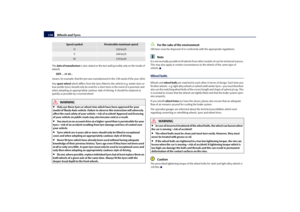 177
177 178
178 179
179 180
180 181
181 182
182 183
183 184
184 185
185 186
186 187
187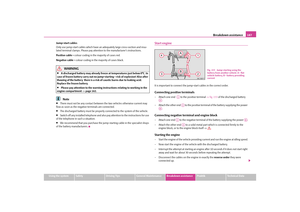 188
188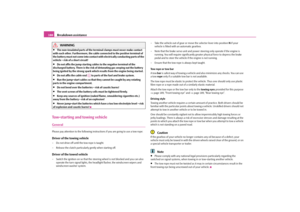 189
189 190
190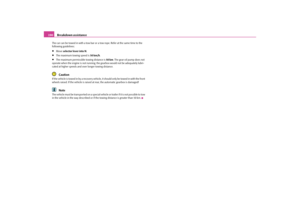 191
191 192
192 193
193 194
194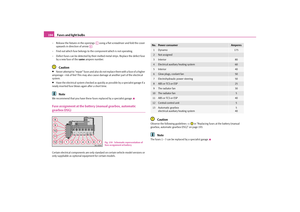 195
195 196
196 197
197 198
198 199
199 200
200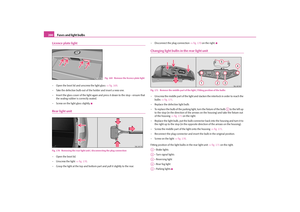 201
201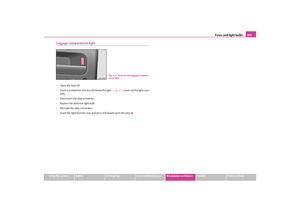 202
202 203
203 204
204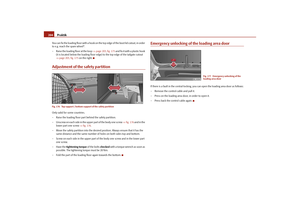 205
205 206
206 207
207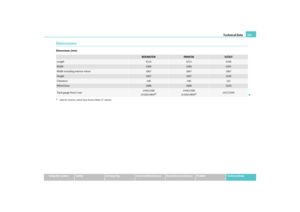 208
208 209
209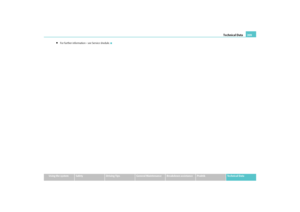 210
210 211
211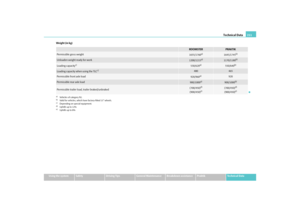 212
212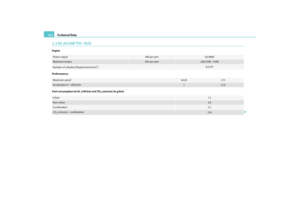 213
213 214
214 215
215 216
216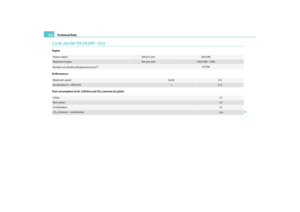 217
217 218
218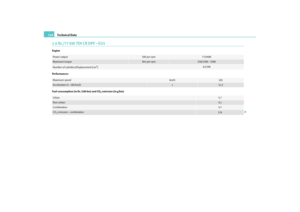 219
219 220
220 221
221 222
222 223
223 224
224 225
225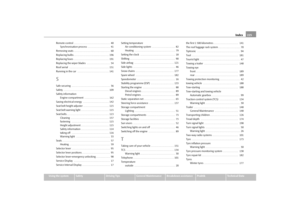 226
226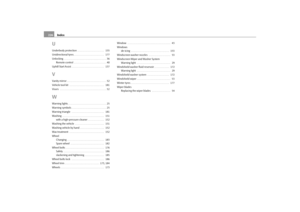 227
227 228
228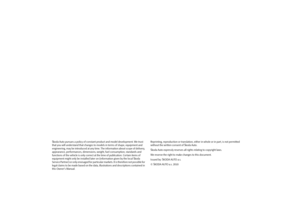 229
229 230
230






